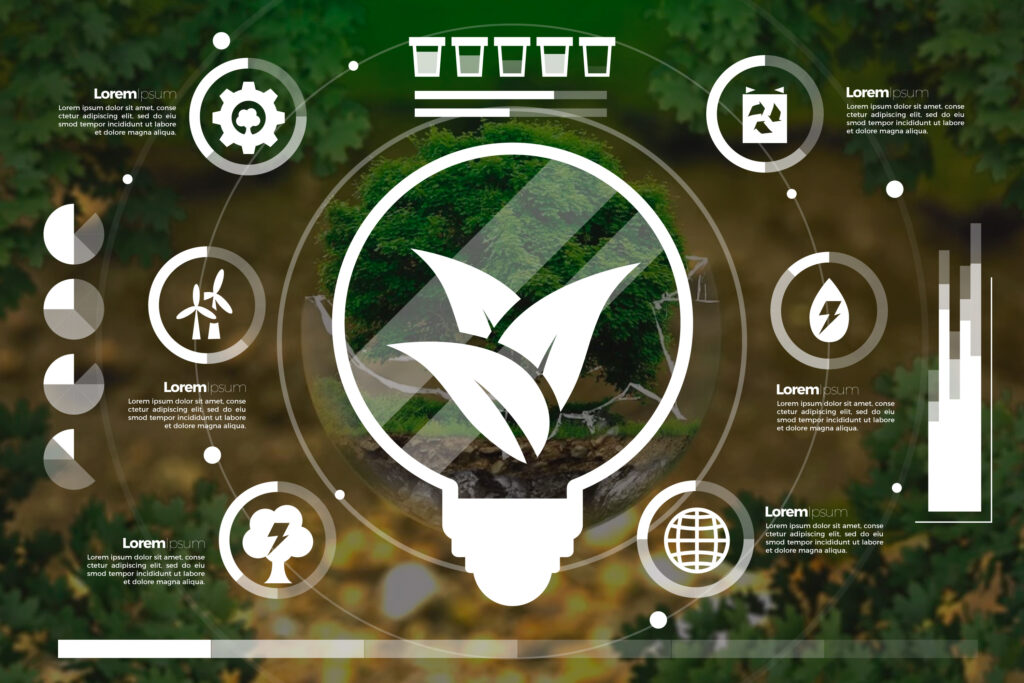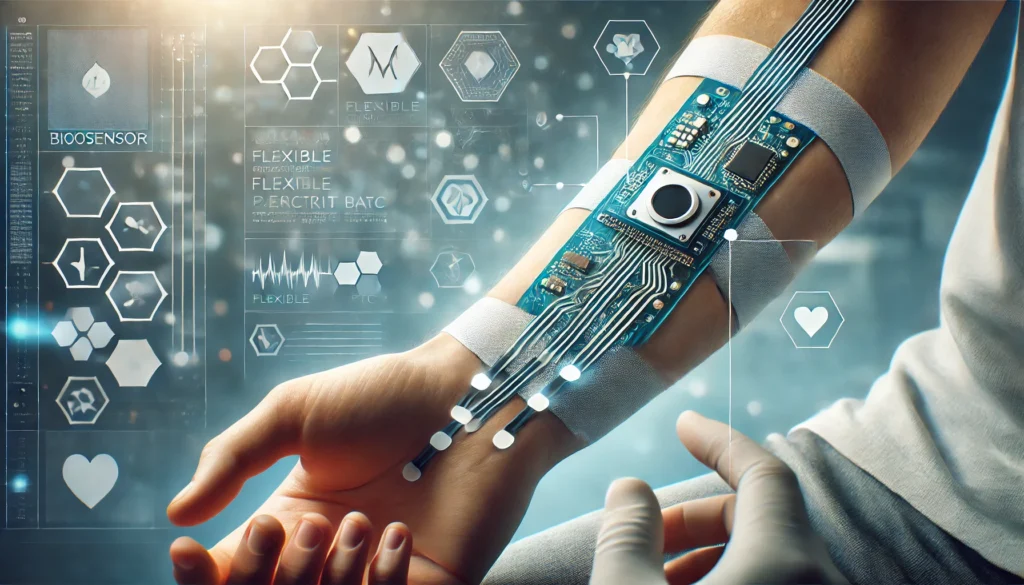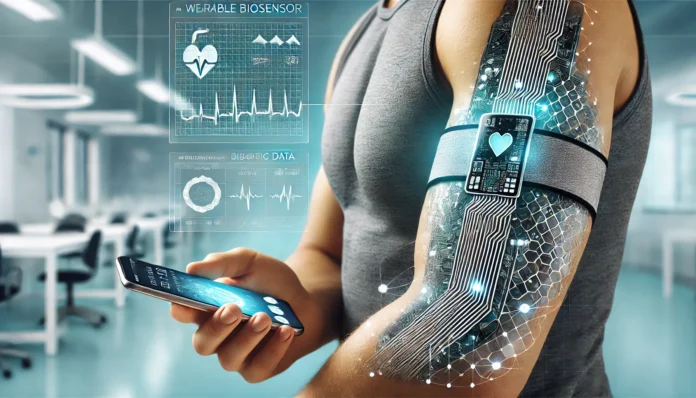Biotechnology—a field dedicated to harnessing cellular and biomolecular processes—has witnessed a rapid evolution over the past few decades. As it has grown, so too has the importance of biosensing technologies that can detect and measure biological parameters with unprecedented accuracy. Biosensors, at their core, merge biology with electronics, making it possible to transform chemical or biological events (like the presence of a specific protein or pathogen) into electronic signals for interpretation and further action. This synergy has not only advanced scientific research but also driven practical applications in healthcare diagnostics, environmental monitoring, food safety, and beyond.
In parallel, electronic design has undergone its own renaissance, fueled by the miniaturization of components, greater computational power, and refined manufacturing processes like flexible PCB (Printed Circuit Board) technologies. As a result, sensor systems have shrunk to sizes that were unimaginable a few years ago. Modern biosensors, integrated with embedded systems, are now small enough to be worn as patches, implanted within the body, or used in remote field settings for real-time data collection. This leap in miniaturization unlocks new possibilities in personal healthcare, telemedicine, and a host of other sectors that rely on accurate, continuous biological monitoring.
1. The Significance of Biosensing
A biosensor generally consists of a biological component—often an enzyme, antibody, nucleic acid, or receptor protein—paired with a physicochemical detector. When the target analyte (such as a particular molecule or microorganism) binds with the biological element, the detector converts this binding event into a measurable signal. Traditional biosensors might rely on optical changes (like fluorescence or colorimetric shifts) or electrochemical signals (changes in current or voltage). The adoption of robust electronic design, however, has given rise to a new generation of sensors boasting higher sensitivity, specificity, and real-time feedback capabilities.
Biosensing is invaluable in several areas:
- Medical Diagnostics: Point-of-care devices for glucose monitoring, cholesterol tests, and even cancer marker detection rely heavily on biosensing techniques.
- Environmental Monitoring: Sensors that detect hazardous substances, pollutants, or pathogens help maintain safety in water supply systems or natural habitats.
- Agriculture and Food Safety: Quick tests that identify contaminants like pesticides or bacterial outbreaks ensure product quality and protect public health.
- Pharmaceutical Development: Rapid, accurate methods of quantifying biomolecules or gauging drug efficacy are crucial in both laboratory and clinical trials.
Because of these high-stakes applications, the design and performance of biosensors must meet rigorous standards of accuracy, reliability, and user-friendliness. Here is where advanced electronics, sophisticated embedded programming, and expert engineering become indispensable.
2. Core Technologies in Biosensing
Modern biosensors integrate multiple disciplines—biochemistry, nanotechnology, microfluidics, electronics, and data science—into cohesive systems. Some of the key technologies driving this field include:
- Nanomaterials: Innovations in nanoparticle and nanowire synthesis have led to sensors with vastly increased sensitivity. Nanomaterials provide larger surface areas for interactions, boosting the sensor’s capacity to detect trace amounts of an analyte.
- Microfluidics: Lab-on-a-chip devices rely on microfluidic channels to manipulate small fluid volumes precisely. By integrating micro-pumps, mixers, and detection zones, these miniaturized systems can perform complex biochemical assays automatically, streamlining analysis and reducing reagent use.
- Flexible Electronics: Thin, bendable circuit boards can adhere to curved surfaces—like the human body—to continuously monitor biomarkers (e.g., sweat composition, heart rate variability, or lactate levels). This is particularly relevant in wearables that track fitness or specific diseases.
- Wireless Communication: Bluetooth Low Energy (BLE), Wi-Fi, and other wireless protocols enable real-time data transfer from the sensor to a smartphone app or a remote server. Healthcare providers can thus monitor a patient’s status continuously, intervening promptly if critical changes arise.
- Embedded Firmware and Software: To convert raw signals into actionable insights, biosensors rely on sophisticated algorithms and data processing, often performed in miniature microcontrollers. Software calibration, noise reduction, and error-correction protocols are essential for extracting high-fidelity signals from physiological and environmental “noise.”

3. Challenges in Biosensor Development
Despite tremendous progress, creating robust biosensors remains challenging. Designers must address issues such as:
- Sensitivity and Specificity: A biosensor must discriminate between closely related biomolecules and detect target analytes at minute concentrations. Even slight cross-reactivity can render readings unreliable.
- Stability and Shelf Life: Biological components can degrade over time, especially when exposed to temperature fluctuations, humidity, or contaminants. Protective coatings and material selection are crucial for ensuring durability.
- Scalability and Cost: Manufacturing processes must be optimized for large-scale production without sacrificing the sensor’s performance. This involves refining assembly, calibration, and quality-control procedures to maintain uniform sensor behavior across batches.
- Regulatory Compliance: In fields like healthcare or food safety, sensors must comply with stringent standards set by agencies such as the FDA or ISO. Meeting these regulations requires meticulous validation and documentation throughout the device lifecycle.
- Data Security and Privacy: When biosensor data is transmitted wirelessly, patient confidentiality becomes a critical concern. Designers must implement encryption and secure data storage to prevent unauthorized access.

4. The Rise of Embedded Programs in Tiny Form Factors
One of the most exciting areas in modern biosensing is the integration of embedded programs—firmware and software running on microcontrollers—within extremely compact devices. These tiny form factors address the growing demand for portability and unobtrusive monitoring. From wearable patches to ingestible capsules, embedded systems allow complex biosensing operations to occur discreetly.
Miniaturization of microcontrollers (MCUs) and the efficiency of integrated circuits have reached a point where a sensor’s entire electronic front-end can be placed on a chip the size of a fingernail. Many MCUs now contain built-in Analog-to-Digital Converters (ADCs), amplifiers, and wireless modules, reducing the need for external components. Additionally, operating systems like FreeRTOS or lightweight custom firmware can manage multiple tasks—such as data acquisition, wireless transmission, and power optimization—without burdening the user.
By synchronizing sensor readings, processing signals, and transmitting data in real time, these embedded programs expand what biosensors can achieve. For instance, a wearable glucose monitor might continuously gather data from a subdermal probe and alert a user’s smartphone if glucose levels deviate from the normal range. Alternatively, a smart wound dressing could sense wound temperature, pH, and moisture levels, automatically notifying a healthcare provider if an infection is developing. Such functionality would be impossible without adept embedded programming on a miniature scale.
5. Applications Driving Demand
The possibilities for biosensing within biotechnology are vast. A few sectors stand out for their rapid growth and demand for innovation:
- Personalized Medicine: Tailoring treatments based on individual biomarkers, such as measuring hormone levels or genetic mutations, is at the forefront of modern healthcare. Biosensors form a foundational element, as they provide real-time feedback on how a patient’s body responds to specific medications or lifestyle changes.
- Continuous Health Monitoring: Beyond diabetes management, continuous monitoring can track electrolytes, hydration status, stress hormones, and more. Wearable sensors integrated into clothing or skin patches could improve patient outcomes by detecting health issues earlier.
- Biosecurity and Pandemic Preparedness: Rapid, field-deployable biosensors can detect viruses or bacteria to prevent outbreaks. Future pandemic responses may rely on networks of connected biosensors that alert health authorities when clusters of infection appear in local populations.
- Cell Culture and Biomanufacturing: Industrial-scale production of biologics (therapeutic proteins, vaccines, etc.) demands tight process control. Biosensors that measure conditions like pH, dissolved oxygen, and cell density help optimize yields and ensure product quality.
6. The Role of Electronics and PCB Design
No matter how advanced the biochemical aspects of a sensor might be, the device’s ultimate performance often hinges on high-quality electronic design. Printed Circuit Boards serve as the backbone, hosting the microcontroller, signal conditioning circuits, and any communication modules. In many modern biosensors, the trend is toward flexible PCB design, allowing the sensor to conform to curved surfaces—an essential feature for wearables and implants.
Key considerations in PCB design for biosensing include:
- Noise Reduction: Low-level signals from electrochemical or optical transducers can easily be drowned out by electromagnetic interference (EMI). Layout strategies—such as careful grounding, shielding, and filtering—are crucial for preserving signal integrity.
- Component Placement: The physical arrangement of sensors, power regulators, and microcontrollers must minimize interference or crosstalk. Properly separating analog and digital sections is typically part of best design practices.
- Thermal Management: Heat generation can alter the performance of certain sensitive biological elements. A well-designed PCB will ensure the sensor region remains unaffected by any heat sources (like power regulators).
- Miniaturization: As devices shrink, layer management in multilayer PCBs, via sizes, and tight component spacing become pressing concerns. Manufacturers must strike a balance between compactness and manufacturability.
- Connectors and Packaging: In wearables or implantable devices, reliable sealing and biocompatible materials can mean the difference between success and failure. Designers must account for environmental factors like sweat, bodily fluids, or disinfectants.
7. Arshon Technology: Your Partner in Sensor and Electronic Design
In the crowded field of biosensing and biotechnology, selecting the right design and manufacturing partner can significantly accelerate time to market while ensuring top-tier product quality. Arshon Technology is one such partner with broad expertise in sensor development, electronics design, embedded programming, and end-to-end product realization. Their design philosophy integrates deep technical knowledge with practical experience across a range of industries.
- Custom Sensor Solutions: Arshon Technology works closely with clients to understand the unique requirements of their biosensing application, from target analytes to environmental conditions. The team can then recommend the best sensor technology—be it electrochemical, optical, or capacitive—and customize it for optimal sensitivity and specificity.
- PCB and Firmware Design: Whether you need a flexible PCB for a wearable patch or a compact embedded system for a handheld diagnostic tool, Arshon Technology’s engineers handle the layout, component selection, noise mitigation, and firmware implementation. By developing hardware and software in tandem, they ensure seamless communication between sensor modules and microcontrollers.
- Prototype Through Production: Arshon Technology’s capabilities span the entire product development cycle. Early-stage prototypes benefit from quick iteration and specialized calibration. Once a design is finalized, the company can manage or assist with production, bridging the gap between lab-scale concepts and full commercial deployment.
- Regulatory Assistance: With experience in medical and industrial markets, Arshon Technology understands the importance of meeting regulatory milestones. The company can help compile the necessary data for compliance documentation, ensuring that biosensing devices adhere to safety and performance standards.
- Industry Insights: By working with a diverse client base, Arshon stays current on emerging trends and technologies in biosensing—such as low-power IoT connectivity, AI-driven data analytics, and advanced microfluidics. Clients therefore gain access not only to engineering expertise but also to strategic insights that can inform product roadmaps.

8. Future Directions in Biosensing
Technological momentum suggests that biosensors will become even smaller, faster, and more integrated into everyday life. Emerging research themes hint at what lies ahead:
- Organs-on-Chips: Miniaturized systems that replicate human organ functions (e.g., “lung-on-a-chip”) will require embedded sensors to monitor complex interactions at a cellular level.
- Wearable AI: Merging biosensors with on-device machine learning could enable real-time predictions—such as detecting imminent medical emergencies based on subtle biomarker fluctuations.
- 3D Printing and Bioprinting: Customizable sensor architectures might be fabricated using specialized 3D printers, paving the way for personalized implants that fit a patient’s physiology precisely.
- Multi-Analyte Detection: Future biosensors may track multiple biomarkers simultaneously, offering holistic snapshots of a patient’s health or an environment’s condition.
- Energy Harvesting: Wearables and implants that draw power from body heat or motion could eliminate the need for battery replacements, making continuous monitoring more feasible and user-friendly.
In this dynamic environment, continued collaboration between biotech researchers, materials scientists, and electronics engineers will be vital. The key to success lies in developing interdisciplinary teams capable of uniting theoretical breakthroughs with robust, user-focused designs.
9. Type of Biosensors in Biotechnology
- Electrochemical Biosensors: Measure biochemical reactions via electrical signals, commonly used in glucose monitoring.
- Optical Biosensors: Utilize light-based detection methods, such as fluorescence and surface plasmon resonance.
- Piezoelectric Biosensors: Detect mass changes via frequency variations in piezoelectric materials.
10. Biosensors Examples
Biosensing is invaluable in several areas:
- Medical Diagnostics: Point-of-care devices for glucose monitoring, cholesterol tests, and even cancer marker detection rely heavily on biosensing techniques.

- Environmental Monitoring: Sensors that detect hazardous substances, pollutants, or pathogens help maintain safety in water supply systems or natural habitats.
- Agriculture and Food Safety: Quick tests that identify contaminants like pesticides or bacterial outbreaks ensure product quality and protect public health.
- Pharmaceutical Development: Rapid, accurate methods of quantifying biomolecules or gauging drug efficacy are crucial in both laboratory and clinical trials.
Because of these high-stakes applications, the design and performance of biosensors must meet rigorous standards of accuracy, reliability, and user-friendliness. Here is where advanced electronics, sophisticated embedded programming, and expert engineering become indispensable.
11. Importance of Biosensors in Biotechnology
Biosensors provide critical advancements in biotechnology by enabling:
- Early disease detection and personalized medicine.
- Real-time environmental monitoring for sustainability.
- Enhanced food and pharmaceutical safety protocols.
12. Biosensors in Biotechnology Notes
- Biosensors consist of a biological recognition element and a transducer that converts biochemical reactions into measurable signals.
- They are widely used in healthcare, environmental monitoring, food safety, pharmaceuticals, and biosecurity.
- Modern biosensors incorporate nanotechnology, microfluidics, and wireless communication for enhanced sensitivity and real-time data transfer.
- Miniaturization and integration with embedded systems have led to wearable and implantable biosensors.
- Regulatory compliance is essential for biosensors used in medical diagnostics and industrial applications.
13. What is the Role of Biosensors in Biotechnology?
Biosensors facilitate the detection, monitoring, and analysis of biological substances, playing a crucial role in fields such as healthcare, agriculture, and biosecurity.
14. What are the Three Types of Biosensors?
- Affinity Biosensors: Detect molecular interactions, often used in DNA or antigen testing.
- Enzymatic Biosensors: Utilize enzymes for biochemical detection, common in glucose monitoring.
- Cell-Based Biosensors: Employ living cells to analyze environmental or medical conditions.
15. What are the Applications of Biosensors?
Biosensors have diverse applications across multiple industries:
- Healthcare: Non-invasive glucose monitors, wearable health trackers, and disease diagnostics.
- Environmental Monitoring: Detection of heavy metals, toxins, and pathogens in air, soil, and water.
- Food Safety: Identifying contaminants such as pesticides, bacteria, and allergens.
- Pharmaceuticals: Drug discovery, bioprocess monitoring, and therapeutic efficacy testing.
- Agriculture: Soil nutrient analysis, plant disease detection, and monitoring livestock health.
- Biosecurity: Early detection of bioterrorism agents and infectious disease outbreaks.
With continuous advancements in biosensor technology, their applications are expanding, enhancing efficiency and safety across various fields.
16. Conclusion
Biosensing stands at the heart of modern biotechnology, forging new ways to identify, measure, and manage critical biological signals. The interdependence of biochemical detection and electronic design has given rise to sensors that are more accurate, robust, and integrated into our daily lives than ever before. Whether used in a hospital ward to diagnose diseases, in a production line to ensure product quality, or in personal wearables to improve individual well-being, these tiny yet powerful systems epitomize the synergy between technology and biology.
In this landscape of rapid progress and heightened complexity, a trusted partner like Arshon Technology can make a substantial difference. Their proficiency in sensor development, embedded programming, and electronic design positions them as a go-to resource for organizations aiming to harness the next wave of biosensing innovations. From concept through production, Arshon Technology’s engineers deliver solutions that meet the stringent demands of diverse industries, helping to translate groundbreaking scientific ideas into tangible, high-performing products.
As biotech and sensor design continue to converge, the possibilities for transformative applications only grow. By staying at the forefront of electronic miniaturization, materials engineering, and data analytics, the biosensing community can tackle some of humanity’s most pressing challenges—improving healthcare outcomes, preserving environmental resources, and enhancing the quality of life for people around the globe. And with companies like Arshon Technology driving the engineering side of the equation, the future of biosensing promises to be both bright and impactful, laying the groundwork for breakthroughs we have yet to imagine.
